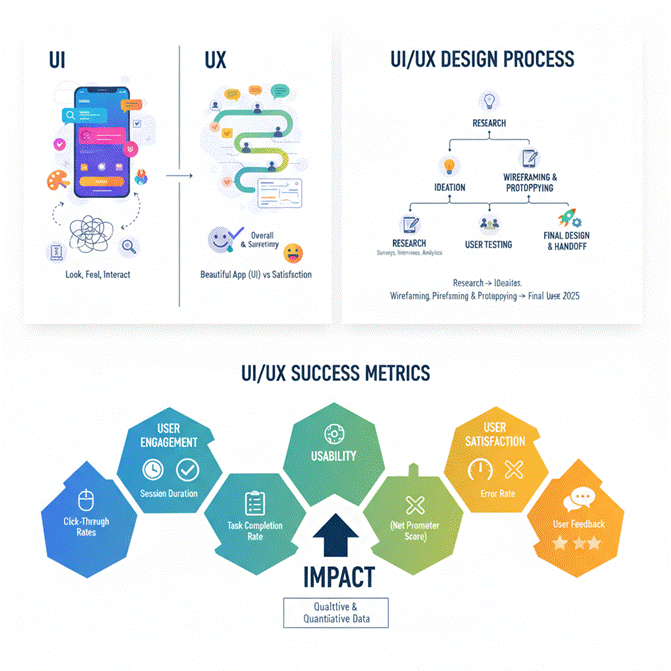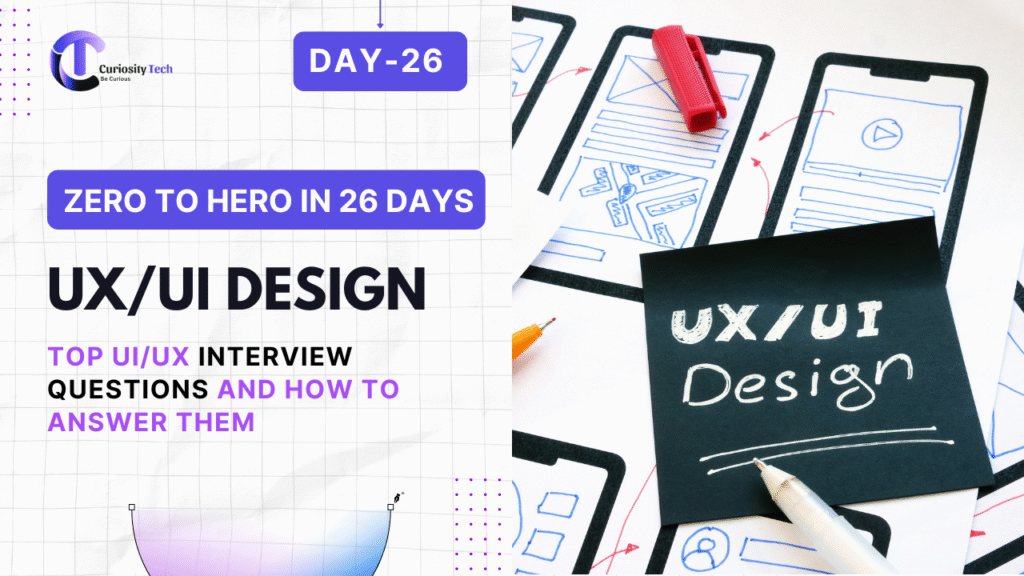The world of UI/UX design is dynamic, constantly evolving, and deeply user-centric. If you’re preparing for a UI/UX interview, it’s not just about knowing tools like Figma, Sketch, or Adobe XD; it’s about showcasing your design thinking, problem-solving abilities, and understanding the user journey. Today, we will break down top UI/UX interview questions, provide detailed answers, and give you tips to confidently navigate these conversations.
At Ccuriositytech.inuriosityTech.in, we’ve seen hundreds of aspiring UI/UX professionals land their dream roles by combining creativity with structured preparation. Our training emphasizes both technical proficiency and real-world application, so designers are ready to handle any question that comes their way.
1. Understanding UI vs UX
Question: Can you explain the difference between UI and UX design?
How to Answer:
UI (User Interface) refers to the look, feel, and interactivity of a product. UX (User Experience), on the other hand, focuses on the overall journey and satisfaction of the user. For example, a beautifully designed app (UI) might still frustrate users if navigation is confusing (UX).
Pro Tip: Highlight your experience in both areas. You could say:
“While UI ensures that the interface is visually appealing and accessible, UX ensures the flow aligns with user goals and expectations. In my last project, I worked closely with developers to create a UI that reduced task completion time by 30%, improving the overall user experience.”
2. Design Process and Problem-Solving
Question: Walk us through your design process.
How to Answer:
A structured answer will always impress. Most interviewers expect a process like this:
| Step | Description |
| Research | Understanding users through surveys, interviews, and analytics. |
| Ideation | Brainstorming solutions and sketching wireframes. |
| Wireframing & Prototyping | Creating low-fidelity wireframes, followed by interactive prototypes. |
| User Testing | Collecting feedback and iterating. |
| Final Design & Handoff | Ensuring developers implement the design as intended. |

Mention tools and methods you’ve used. At CuriosityTech.in, we train candidates to showcase real projects from start to finish, highlighting problem-solving at each stage.
3. Handling User-Centric Challenges
Question: How do you handle conflicting feedback from users and stakeholders?
How to Answer:
Explain your ability to balance stakeholder goals with user needs. For instance:
“I prioritize understanding the root of the conflict. I may run A/B tests, gather user analytics, or present a design rationale that considers both perspectives. Ultimately, decisions are guided by what maximizes user satisfaction and business objectives.”
4. UI/UX Metrics and Evaluation
Question: How do you measure the success of your designs?
How to Answer:
UI/UX metrics are essential to validate your work. Mention both qualitative and quantitative metrics, such as:
- User Engagement: Click-through rates, session duration
- Usability: Task completion rate, error rate
- Satisfaction: NPS (Net Promoter Score), user feedback
Adding visuals like an infographic showing metrics flow can leave a lasting impression.
5. Behavioral and Situational Questions
Many interviews include behavioral questions, such as:
- Describe a time you improved a product based on user feedback.
- How do you handle tight deadlines without compromising design quality?
Answering Tip: Use the STAR method (Situation, Task, Action, Result). CuriosityTech.in mentors encourage students to document their portfolio projects, making it easy to narrate experiences confidently.
6. Portfolio Presentation Tips
Your portfolio often speaks louder than words. Include:

7. CuriosityTech.in Approach to Interview Readiness
At CuriosityTech.in, we provide end-to-end training for UI/UX aspirants. From understanding design principles to portfolio building and mock interviews, our approach ensures you are industry-ready. Candidates trained here not only master tools but also develop the confidence to answer tricky questions, explain design decisions, and impress interviewers with real-world examples.
Conclusion
UI/UX interviews are less about memorizing answers and more about demonstrating your design thinking, empathy for users, and ability to solve problems creatively. By preparing for common questions, presenting structured responses, and showcasing a strong portfolio, you position yourself as a standout candidate. Remember, interviewers are not just hiring skills—they are hiring your approach to solving real user problems.
Whether you’re an aspiring designer or a professional looking to level up, Cucuriositytech.inriosityTech.in provides the guidance, mentorship, and resources to help you succeed in UI/UX interviews in 2025 and beyond.



